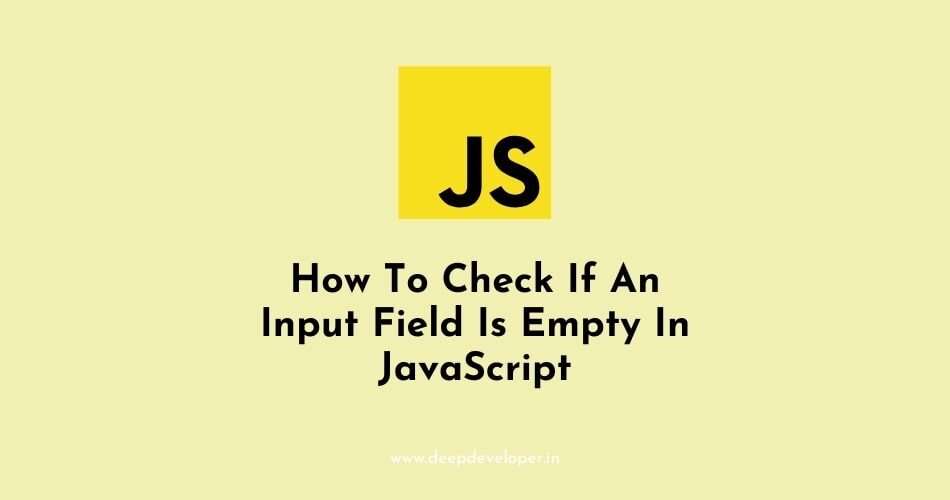You can use JavaScript to check if an input field is empty by comparing the value of the field to an empty string. Here’s an example of how to do it:
<form>
Name: <input type="text" id="name">
<input type="button" value="Submit" onclick="validate()">
</form>
<script>
function validate() {
var name = document.getElementById("name").value;
if (name.trim() === "") {
alert("Name field is empty.");
} else {
alert("Name: " + name);
}
}
</script>In this example, when the user clicks the “Submit” button, the validate() function is called. This function gets the value of the “name” field, and check if it’s an empty string or not by comparing it to an empty string. If the value is an empty string, an alert is displayed to the user indicating that the input field is empty. Otherwise, it will show “Name: [value]”.
You can also check if the length of the input is equals to 0
if (name.length === 0) {
alert("Name field is empty.");
} else {
alert("Name: " + name);
}It is also a good practice to validate the input on the server side as well, to ensure that the validation is done even if the user has disabled JavaScript.
Also, it’s a good practice to use .trim() function to remove white spaces from both ends before checking if the input is empty.
Also Read:
- How To Get The Last Character Of A String In JavaScript
- Remove The Last Character Of A String In JavaScript
- How To Validate An Email Address In JavaScript
- How To Check If An Input Field Is Empty In JavaScript
- Check If An Input Field Is A Number In JavaScript
- Confirm Password Validation In JavaScript
- How To Print A PDF File Using JavaScript
- Calculate The Number Of Days Between Two Dates In JavaScript
- How To Compare Two Dates In JavaScript
- Calculate Age With Birth Date YYYYMMDD In JavaScript
- How To Append or Add Text To A DIV Using JavaScript
- How To Get The Text Of HTML Element In JavaScript
- How To Change The Text Inside A DIV Element In JavaScript
- Show/Hide Multiple DIVs In JavaScript
- Show A DIV After X Seconds In JavaScript
- Display A JavaScript Variable In An HTML Page
- How To Generate A Random Number In JavaScript
- Bubble Sort In JavaScript
- Insertion Sort In JavaScript
- Selection Sort In JavaScript
- How To Remove A Specific Item From An Array In JavaScript
- Merge Sort In JavaScript
- Round To 2 Decimal Places In JavaScript
- SetInterval() and setTimeout() Methods In JavaScript
- Generate A Unique ID In JavaScript
- Caesar Cipher In JavaScript
- How To Reverse A String In JavaScript
- How To Loop Through A Plain JavaScript Object
- How To Open A URL In A New Tab Using JavaScript?

